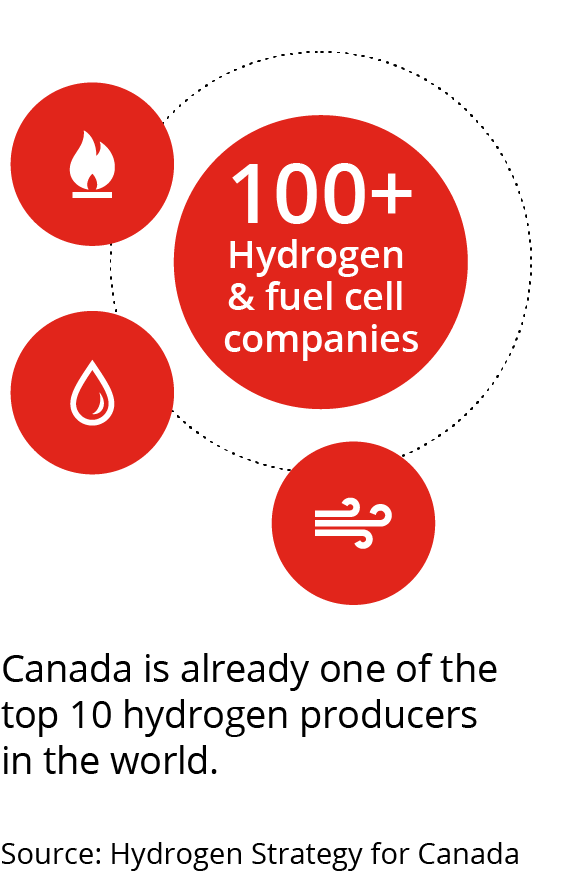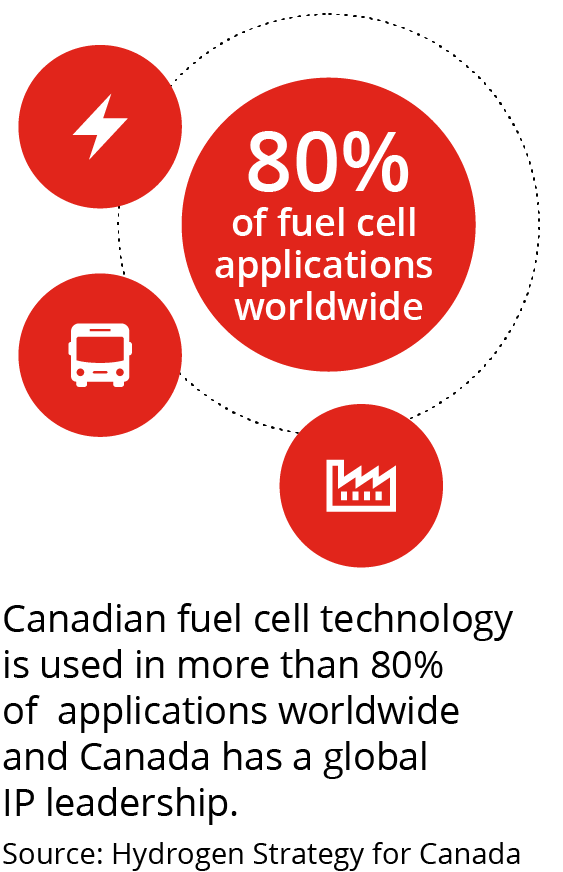Canada is well placed to develop a sustainable hydrogen economy as it forges a path to net zero
As the imperative to decarbonise the global economy becomes increasingly clear, hydrogen is becoming a key tool in that endeavour. It can be produced without any greenhouse gas emissions and does not cause pollution at the point of use. A versatile source of energy, it can replace fossil fuels in applications from heating homes to fuelling heavy transport, such as lorries, trains, ships and even aircraft, that account for 13 per cent of global CO2 emissions.
Hydrogen can also replace carbon-emitting fuels in “hard to abate” and high-emitting industries such as steel, cement and glass, which account for 14 per cent of global emissions. Like heavy vehicles, these industries do not have viable paths to electrification.
“Hydrogen might be nature’s smallest molecule, but its potential is enormous,” The Honourable Seamus O’Regan, Canada’s Minister of Natural Resources, has said, and this is true in terms both of tackling climate change and boosting the economy.
Source: Hydrogen Strategy for Canada, 2020
The projected growth of hydrogen in Canada over the next 30 years
Types of hydrogen production in Canada
Green hydrogen, by contrast, uses renewable electricity and electrolysis to break down water into hydrogen and oxygen. No CO2 at all is created during the process. Blue hydrogen will dominate the sector initially, because equipment to capture CO2 can be fitted to existing production plants. Green hydrogen will accelerate fast but, to become mainstream, it needs much more renewable energy capacity and a huge scale-up in electrolyser capacity.
This is happening. In September 2020, there was only around 200MW of electrolyser capacity worldwide. Projects announced for the 2020–2025 period add up to more than 25GW of capacity, with new initiatives announced almost every week.
In September 2020, there was only around 200MW of electrolyser capacity worldwide. Projects announced for the 2020 - 2025 period add up to more than 25GW of capacity.
Projects
Canada already has a number of green hydrogen projects installed or under construction in Quebec and British Columbia.
- A 20MW electrolyser installed in Bécancour, Quebec, by Air Liquide is now operational and currently the biggest such facility in the world (a status it is unlikely to retain even until the end of the year).
- Hydro-Québec has awarded a contract to a subsidiary of German industrial giant Thyssenkrupp to install an 88MW electrolysis plant in Varennes, Quebec, due to come on stream in 2023.
- Infrastructure bank Macquarie, gas supplier FortisBC and Renewable Hydrogen Canada are looking to develop a green hydrogen plant in British Columbia. It will use the province’s abundant wind and hydro resources to produce hydrogen that will be injected into the local gas network to reduce its carbon intensity.
Source: Hydrogen Strategy for Canada
Forecast worth of global market for hydrogen by 2050
Back to top









